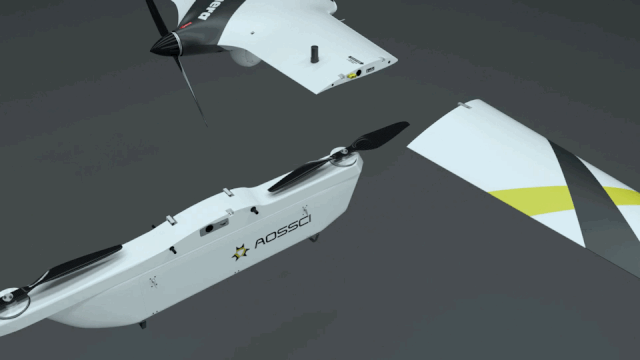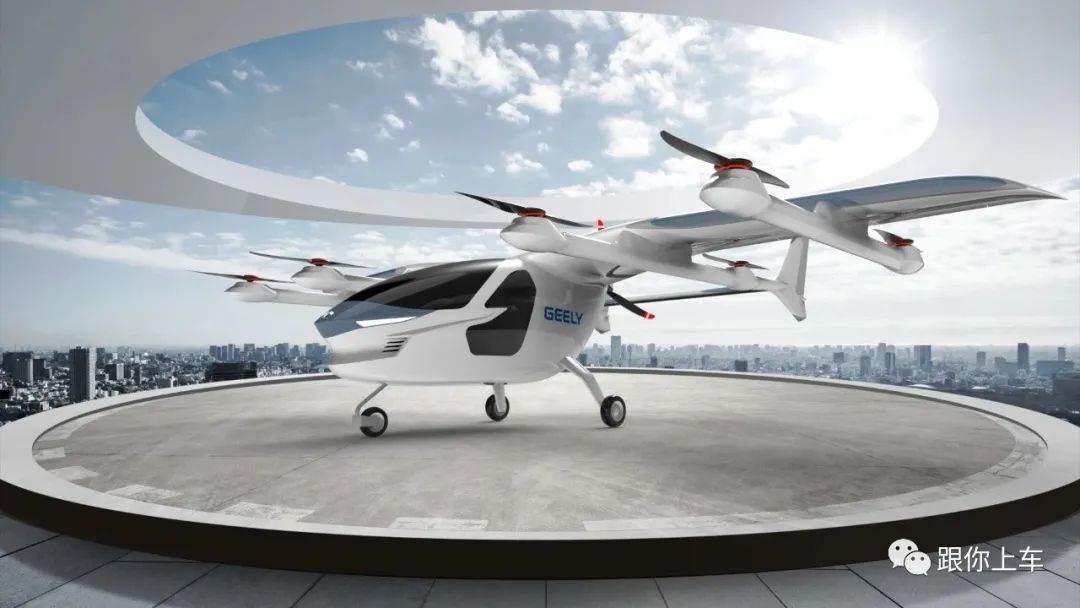Before the arrival of flying cars, the aviation field had been calm.
On September 15th, Sichuan AoShi Technology officially joined Geely Technology Group and renamed themselves as WOVENSKY after combining with the previous TaiLi Flying Car. It is known that in the future, both of the AoShi Drone and TaiLi Flying Car brands will be preserved, with one focusing on the present and the other looking towards the future, realizing an operational strategy with one team and two brands.
On the day of the press conference, WOVENSKY launched its latest AoShi X-Chimera25 drone product and revealed the ambition of Geely Technology Group as an important practitioner of its general aviation strategy.
New XC25 Drone + “Worry-Free” Overall Solution
The new XC25 drone is a large payload and long endurance vertical take-off and landing pure electric drone that combines the advantages of fixed-wing and multi-rotor, with a payload capacity of up to 6kg and a control radius of about 50km. It is equipped with a high-performance flight control computer and is adaptable to various load types. It is worth mentioning that the endurance time of the new XC25 drone is 150% longer than that of its competitors, up to 6 hours, solving the inefficiency problems of large-scale mapping and exploration, and long-term security patrols resulting from insufficient endurance, filling the corresponding market gap.

In addition, the new XC25 drone also has three core advantages:
First, high safety. The new XC25 adopts the concept of forward development from the very beginning of its design. The key parts and systems of the entire body are designed redundantly, such as dual battery, dual rudder, and dual IMU sensors, fully guaranteeing the normal operation of the system, reflecting the profound integration capabilities and electronic and electrical architecture design capabilities of WOVENSKY.
Second, simple and convenient. During the event, professional personnel completed the assembly of the drone in just 1 minute and 5 seconds before the multiple new XC25 drones conducted a demonstration of flying formation and emergency response. It is understood that ordinary users only need 3 minutes to assemble the drone. As shown in the figure below, the main body of the new XC25 drone is roughly composed of seven parts, which can be easily assembled:
 ### Third, Service Upgrade
### Third, Service Upgrade
Wofei Changkong, for the first time in the drone industry, has launched a product recall mechanism. Once users find design defects, they can immediately recall the product and communicate with the manufacturer in real-time for improvement and upgrade services. Currently, Wofei Changkong has service points in multiple countries along the “Belt and Road,” providing 7 * 24-hour unrestricted aftersales service, and has a complete reserve of accessories with quality assurance for motors, batteries, and flight control systems.
More importantly, based on the strong compatibility of the new XC25 system interface and its ability to adapt to full-load equipment, Wofei Changkong has also launched the “Worry-Free” solution package, which includes full-cycle products and “turn-key” services including the UAV system, ground control system, load system, data link, infrastructure construction, and big data analysis to accurately and efficiently solve user pain points.
Starting from user needs, the solution, design, production, delivery, and aftersales are all in-depth customized systems to address product reliability, remote handover control, and integrated access management issues, and easily cope with future system upgrades. According to preliminary statistics, the new XC25 has accumulated more than a hundred global operation cases, covering multiple industries such as traffic control, emergency rescue, smart maritime, and public security.
It is not difficult to find that the combination of “Aerospace” leading products and the in-depth customized all-scenario solution has gradually grown into the embryonic form of Geely Technology Group’s general aviation strategy.
Future Layout Starting from the Minor
The partnership between Geely Technology Group and Aerospace Technology Company is both accidental and inevitable.
In recent years, under the role of sustainable development goals, general aviation has also been facing the transformation towards electrification, vertical takeoff and landing, and automation, which is also the direction that Geely Technology Group’s Taifeng Flying Car has been working on. Moreover, many underlying technologies of aircraft are similar. Therefore, it is not an exaggeration to say that cooperation between the two is inevitable.

After the strong alliance, both sides will present advantages in technology foundation, product reliability, R&D efficiency, and the development of a shared platform architecture, resulting in one plus one being greater than two. For Aerospace Technology Company, the deep experience accumulated by Taifeng Flying Car in large-scale aircraft speaks for itself. More importantly, relying on Geely Technology Group’s service advantages, it will build a full-time and wide-range service system. For Geely Technology Group, is it just a simple move to lay out the drone field with the addition of Aerospace Technology Company?In my opinion, it is not the case. If flying cars are still a bit far for the general public, then you must be familiar with Caocao Chuxing, a subsidiary of Geely Technology Group. According to official data, as of August 31, 2020, Caocao Chuxing has been launched in 55 cities including Beijing, Shanghai, Guangzhou, and Shenzhen, with over 40.79 million registered users and a daily demand of 1.52 million orders. In addition to ride-hailing and carpooling, the recently popular car-sharing service has also been developed, indicating its deep cultivation in the field of smart mobility.
Furthermore, Geely Technology Group’s subsidiary, Zhejiang Spaceflight Academy of Sciences and Technology, has also been active lately. In March this year, Geely Technology Group’s satellite project officially started in Taizhou, and it was announced that the first two low-orbit satellites independently designed and completed by Zhejiang Spaceflight Academy of Sciences and Technology have passed various tests and are expected to be launched in 2020. These satellites will provide high-speed internet connection, precise navigation, and cloud computing capabilities for autonomous vehicles when put into use.
Geely Technology Group has been involved in various projects related to transportation, from ground-based vehicles to flying ones and even those in space. The vision of Geely Technology Group on the future of mobility is not limited to high-end autonomous driving or flying cars, but also includes smart cities powered by the 5G era.
In summary, Geely Technology Group hopes to build an ecosystem of air transportation that covers unmanned and manned aircraft, helicopters and fixed-wing aircraft, flight platforms and payloads, hardware products and data services, starting with its wearable drone project. From unmanned to manned aircraft is a symbol of Geely Technology Group’s focus today and future prospects. Geely Technology Group has made sufficient preparations to deeply cultivate every segment of future mobility, and to face the upcoming era of interconnectivity.
This article is a translation by ChatGPT of a Chinese report from 42HOW. If you have any questions about it, please email bd@42how.com.
